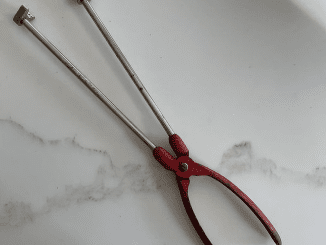Leftover rice is a common kitchen staple, often used to create delicious meals the next day. However, knowing how long you can safely store it in the fridge is crucial for avoiding foodborne illnesses. In this article, we’ll explore the best practices for storing leftover rice and how to ensure it stays safe and tasty.
Understanding Storage Duration: How Long Can Rice Last?
When it comes to storing leftover rice, the general rule is that it can be kept in the refrigerator for up to 4 to 6 days. This timeframe ensures that the rice remains safe to eat and reduces the risk of bacterial growth. Beyond this period, the chances of harmful bacteria such as Bacillus cereus developing increase, which can lead to food poisoning.

Why Storage Duration Matters
Bacteria thrive in certain conditions, particularly when food is left at room temperature for extended periods. Cooked rice, when left out, can become a breeding ground for bacteria if not handled correctly. Refrigeration slows down bacterial growth, but it doesn’t stop it completely, which is why the storage duration is limited.
Proper Storage Tips: Keeping Your Rice Safe
The first step to safely storing leftover rice is to cool it down as quickly as possible. After cooking, rice should be left to cool for no more than 1 to 2 hours before being transferred to the refrigerator. The quicker the rice cools, the less time bacteria have to multiply.
To speed up the cooling process, spread the rice out on a baking sheet or transfer it to a shallow container. This increases the surface area, allowing the rice to cool faster.
Storing rice in airtight containers is essential. These containers help to preserve the freshness of the rice and prevent it from absorbing odors from other foods in the fridge. They also protect the rice from any potential contaminants that could cause spoilage.
When choosing a container, make sure it’s completely sealed to keep air out. Glass or BPA-free plastic containers with tight-fitting lids are ideal for this purpose.
When you’re ready to enjoy your leftover rice, reheating it properly is crucial. The rice should be reheated to a temperature of 165°F (74°C) to ensure that any bacteria present are killed. This is particularly important if the rice has been stored for several days.
It’s also advisable to reheat only the portion you plan to consume. Repeated cooling and reheating can increase the risk of bacterial growth, making the rice unsafe to eat.
Signs of Spoilage: Knowing When to Discard Rice
:max_bytes(150000):strip_icc()/Health-GettyImages-1152865373-b86ab3b9cdac4181bcf7aed2247c6ccf.jpg)
Even with proper storage, leftover rice can spoil. It’s important to be aware of the signs of spoilage so you can avoid consuming rice that could make you ill.
One of the first signs that rice has gone bad is an off odor. If you notice a sour or unusual smell coming from the rice, it’s best to discard it immediately. This smell is a clear indication that the rice is no longer safe to eat.
Mold is another obvious sign that rice has spoiled. Any visible mold or discoloration on the rice indicates that it has been contaminated and should not be consumed. Mold can appear as white, green, or black spots, and even a small amount is enough to render the entire batch unsafe.
If the rice has developed a slimy or sticky texture beyond its usual consistency, this is a strong sign that it has gone bad. Spoiled rice often feels mushier and can even appear glossy due to excess moisture. If you encounter this texture, it’s best to err on the side of caution and throw the rice away.
Best Practices for Leftover Rice: Keeping It Safe and Delicious

To maximize the safety and quality of your leftover rice, follow these best practices:
- Store Quickly: As soon as your rice has cooled, transfer it to an airtight container and place it in the fridge.
- Label Your Containers: It’s easy to forget when you stored something. Labeling your containers with the date helps you keep track of how long the rice has been in the fridge.
- Avoid Room Temperature: Don’t leave cooked rice out for too long. The quicker you store it in the fridge, the better.
- Use a Food Thermometer: When reheating, use a food thermometer to ensure the rice reaches the recommended temperature of 165°F (74°C).
Conclusion: Enjoying Leftover Rice Safely
Leftover rice can be a convenient and tasty addition to many meals, but only if it’s stored and handled correctly. By following the guidelines for proper cooling, storing in airtight containers, and reheating thoroughly, you can safely enjoy your rice within the recommended storage period. Always check for signs of spoilage before consuming, and remember that when in doubt, it’s better to discard the rice than to risk your health.


